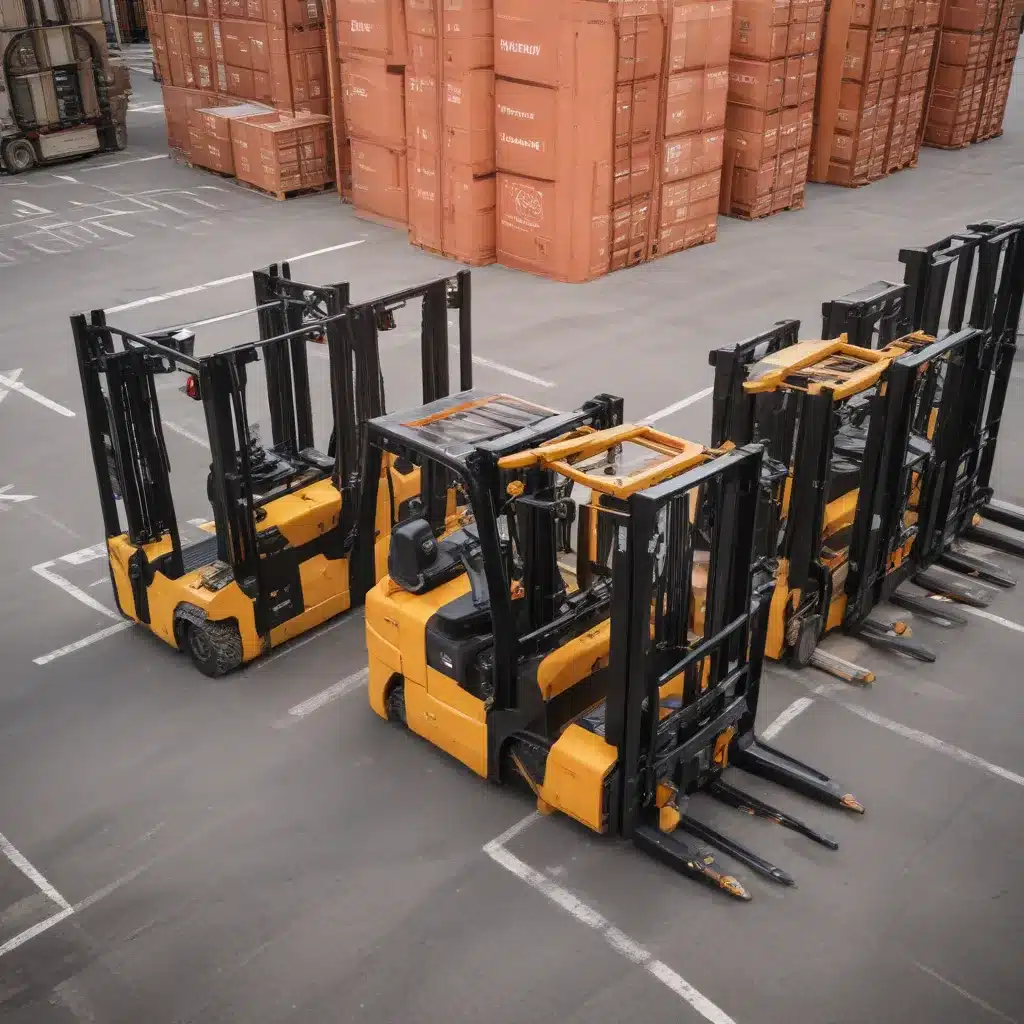
The Evolving Landscape of Forklift Electrification
As the forklift industry continues to embrace sustainability and environmental responsibility, the transition towards electric-powered material handling equipment has gained significant momentum. The shift from traditional internal combustion engine (ICE) forklifts to their electric counterparts not only reduces carbon emissions but also offers a range of operational and cost-saving benefits. However, this transition introduces a new challenge: designing a scalable and flexible charging infrastructure to support a fleet of electric forklifts.
In today’s fast-paced warehousing and logistics environments, forklift operators demand a seamless and reliable charging experience that minimizes downtime and maximizes productivity. The ability to quickly charge a fleet of forklifts, while also accommodating future growth and operational flexibility, has become a critical consideration for warehouse managers and facility operators.
Embracing Universal Forklift Charging Solutions
One of the key challenges in transitioning to electric forklifts has been the compatibility and integration of charging equipment. Traditionally, forklift operators were forced to purchase brand-specific chargers, limiting their ability to update or expand their fleets without significant infrastructure investments.
However, the introduction of universal forklift battery chargers, such as the XLerator line from XL Lifts, has revolutionized the way companies approach their charging needs. These versatile chargers are compatible with forklifts from multiple manufacturers, as well as different battery types, including lithium-ion and lead-acid. This flexibility allows forklift fleet managers to streamline their charging infrastructure, reducing the costs associated with maintaining and upgrading a diverse fleet.
“Our XLerator battery chargers will free companies from the current constraints of powering electric material handling equipment and ultimately save them both time and money,” says Mike Marzahl, President of XL Lifts.
The weather-resistant design of these universal chargers also provides an added advantage, enabling outdoor charging and freeing up valuable indoor warehouse space. This feature can be particularly beneficial for facilities with limited indoor areas or those seeking to optimize their floor plans for maximum efficiency.
Designing a Scalable and Flexible Charging Network
As the adoption of electric forklifts continues to grow, warehouse operators must plan for a future-proof charging infrastructure that can accommodate their evolving fleet requirements. This involves carefully considering the following key factors:
Modular and Configurable Charging Solutions
Forklift fleet managers should seek out charging systems that offer a modular and configurable design, allowing them to scale their charging capacity as their fleet expands. Solutions like the Heliox Flex system, which can provide 60 to 360 kW of power and accommodate up to three vehicles simultaneously, offer the flexibility to adapt to changing needs.
These modular systems also enable efficient site design, with the ability to separate power cabinets and dispensers, allowing for optimal placement within the warehouse layout. This flexibility helps to maximize available space and minimize the impact on existing infrastructure.
Dynamic Power Management
As the demand for electric forklifts grows, the strain on the facility’s electrical grid can become a significant challenge. Charging systems with advanced power management capabilities, such as the Heliox Flex and Rapid solutions, can intelligently distribute and allocate power to multiple charge points, ensuring continuous operation even in the event of a single component failure or servicing need.
“Dynamic power management allows continuous operation of charge points (at reduced load). If one power module, power group, or power cabinet (in a series) is faulted, or if one of these units needs servicing, you can continue with your operations.”
This dynamic power management feature helps to prevent costly downtime and ensures that the forklift fleet remains operational, even during maintenance or unexpected power fluctuations.
Versatile Charging Dispenser Options
The charging dispenser design plays a crucial role in the overall user experience and site optimization. Flexible solutions, like the Heliox Flex and Rapid systems, offer a range of dispenser options, including freestanding columns, wall-mounted cabinets, and overhead configurations. These versatile designs allow warehouse managers to customize the charging infrastructure to fit the unique layout and space constraints of their facility.
Additionally, the inclusion of features such as customizable touchscreens, LED indicators, and integrated payment terminals enhance the user experience, making the charging process more intuitive and efficient for forklift operators.
Empowering Fleet Efficiency and Sustainability
Beyond the immediate charging infrastructure requirements, forklift fleet managers should also consider the broader implications of their electrification efforts. Integrating intelligent energy management platforms, such as PowerFlex X, can provide a comprehensive view of energy usage, enabling optimization of the entire facility’s energy footprint.
These platforms can help warehouse operators:
- Accurately track and report on sustainability metrics, including greenhouse gas emissions and energy consumption
- Identify opportunities for energy savings and cost reduction through demand response programs and on-site renewable energy generation
- Unlock new revenue streams by leveraging the energy storage capabilities of their electric forklift fleet
By adopting a holistic approach to energy management, forklift fleet operators can drive significant improvements in their overall operational efficiency, cost savings, and sustainability goals.
Conclusion: Futureproofing Your Forklift Charging Infrastructure
As the forklift industry continues its transition towards electrification, designing a scalable and flexible charging infrastructure has become a crucial consideration for warehouse managers and logistics professionals. By embracing universal charging solutions, implementing modular and configurable systems, and leveraging advanced power management capabilities, forklift fleet operators can position their facilities for long-term success.
Furthermore, integrating intelligent energy management platforms can help unlock additional benefits, ranging from enhanced sustainability reporting to cost savings and revenue generation. By taking a comprehensive approach to forklift electrification and charging infrastructure, companies can future-proof their operations, drive continuous improvements, and maintain a competitive edge in the rapidly evolving world of material handling.
To learn more about Forklift Reviews and stay up-to-date on the latest industry trends, be sure to visit our website regularly.

